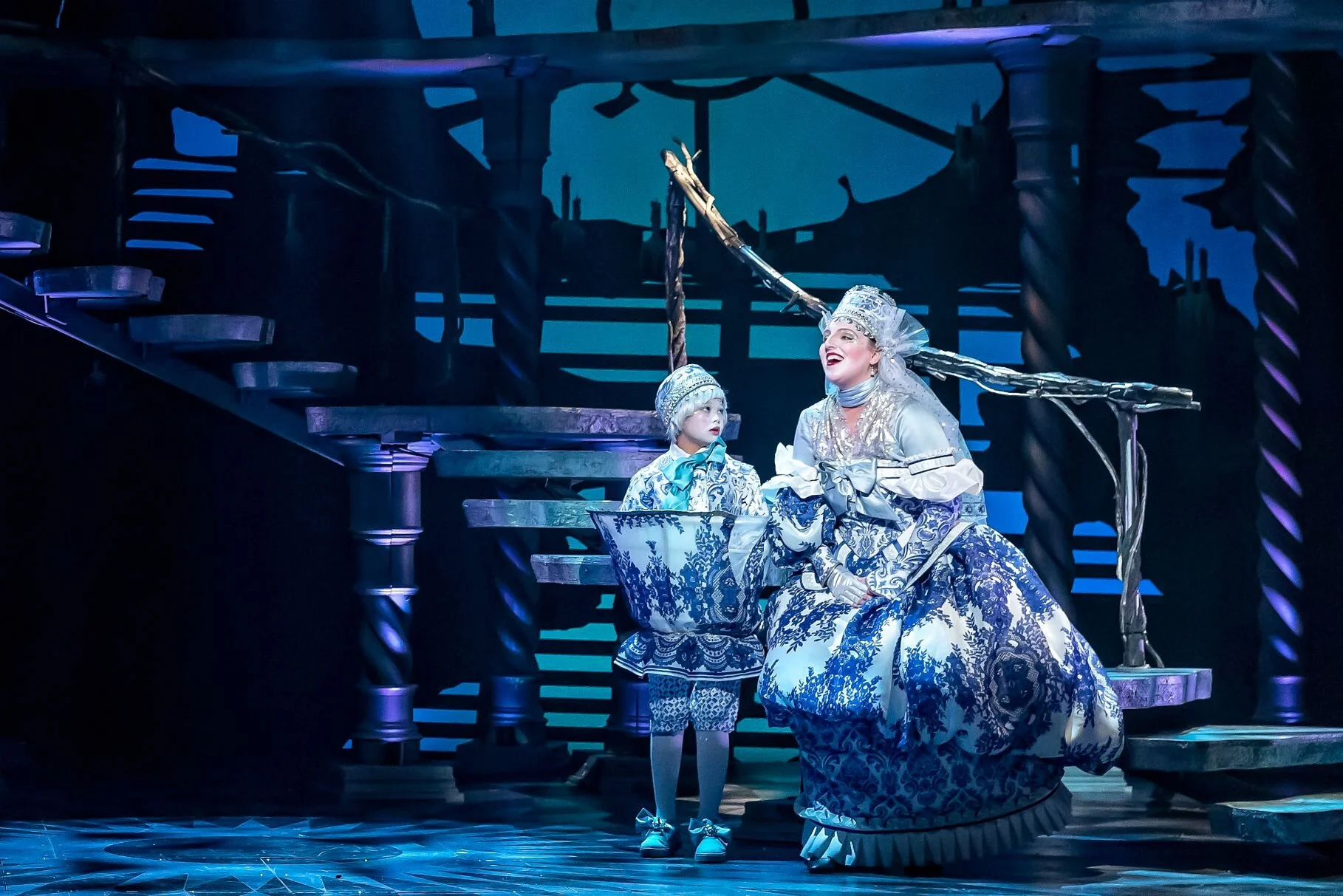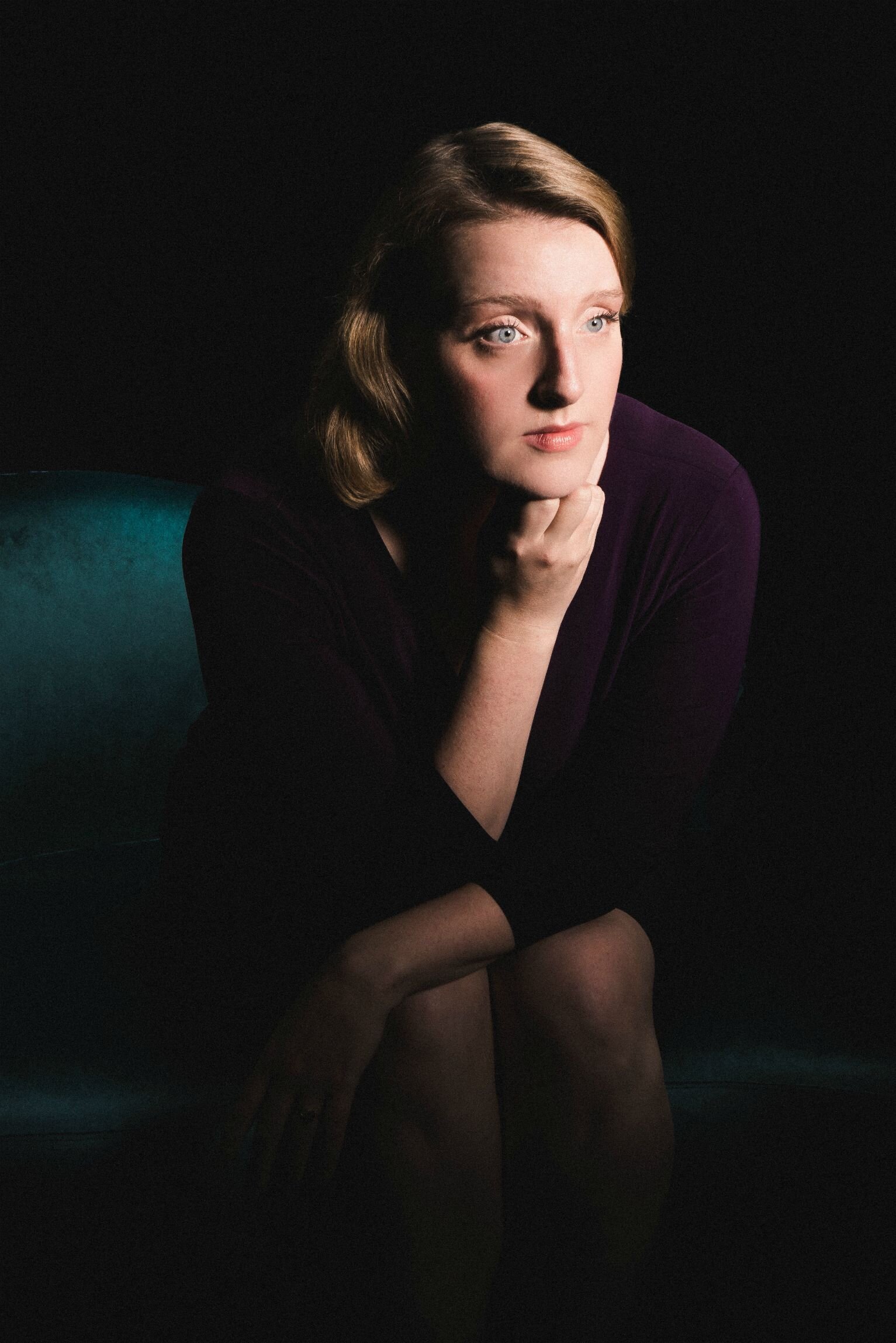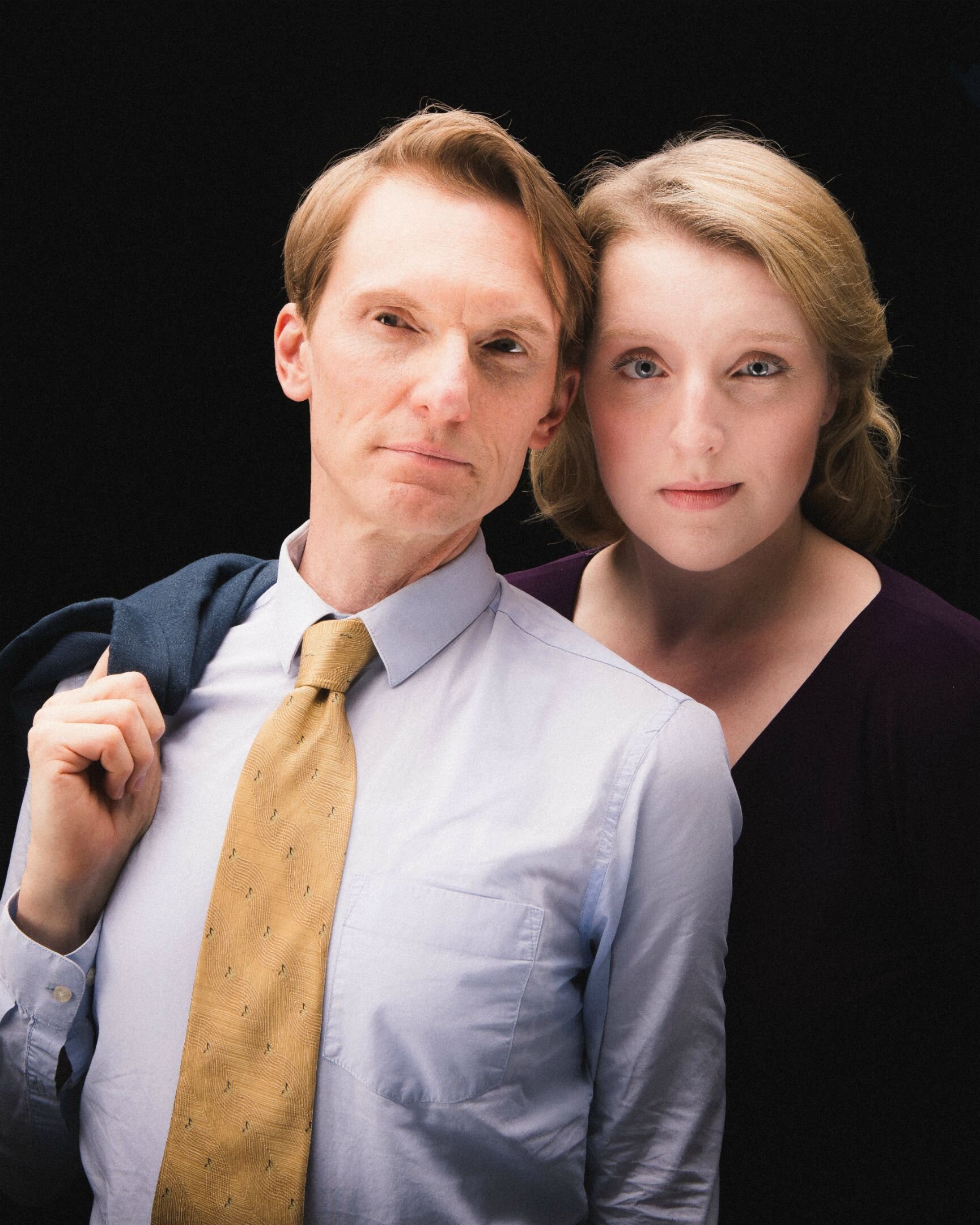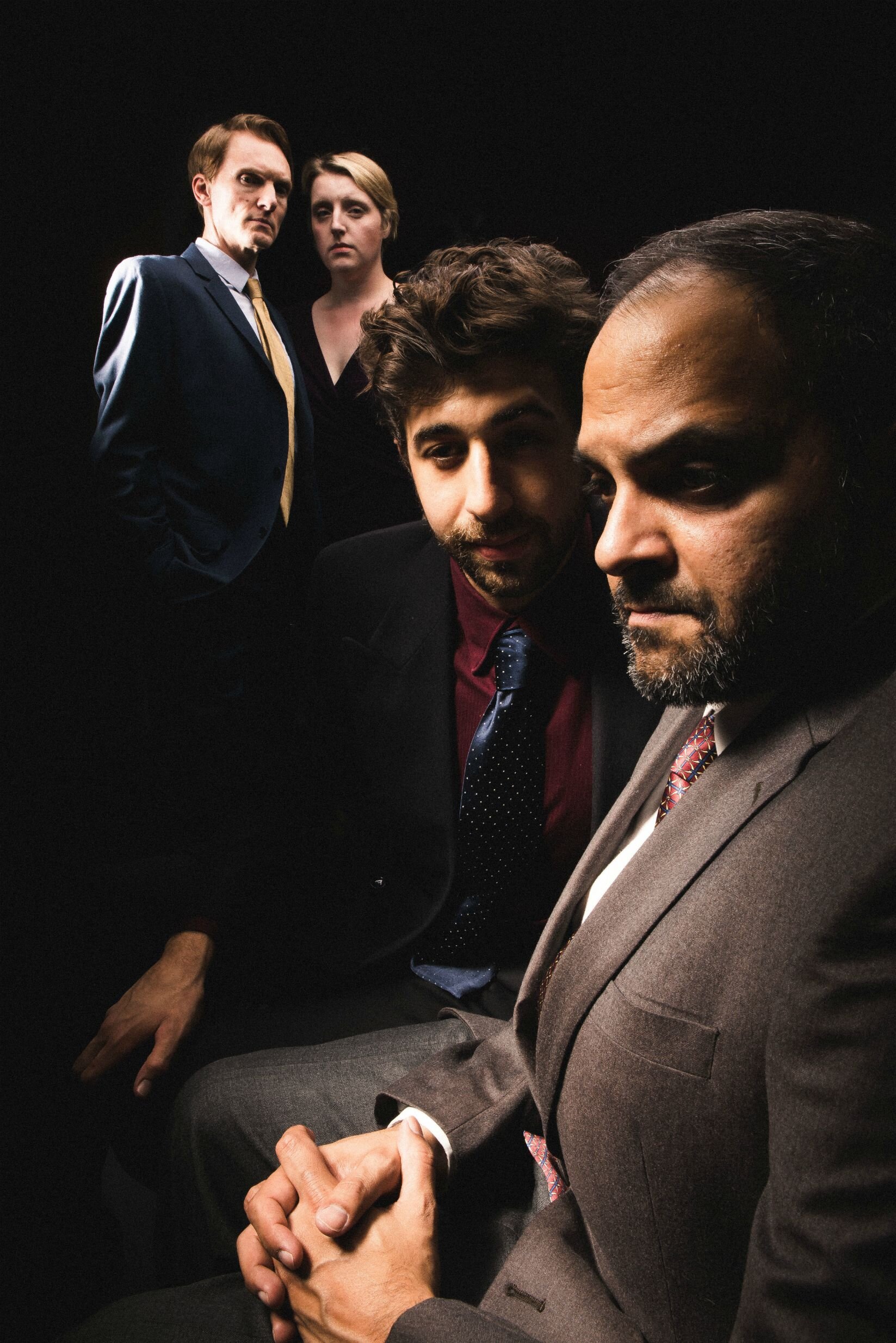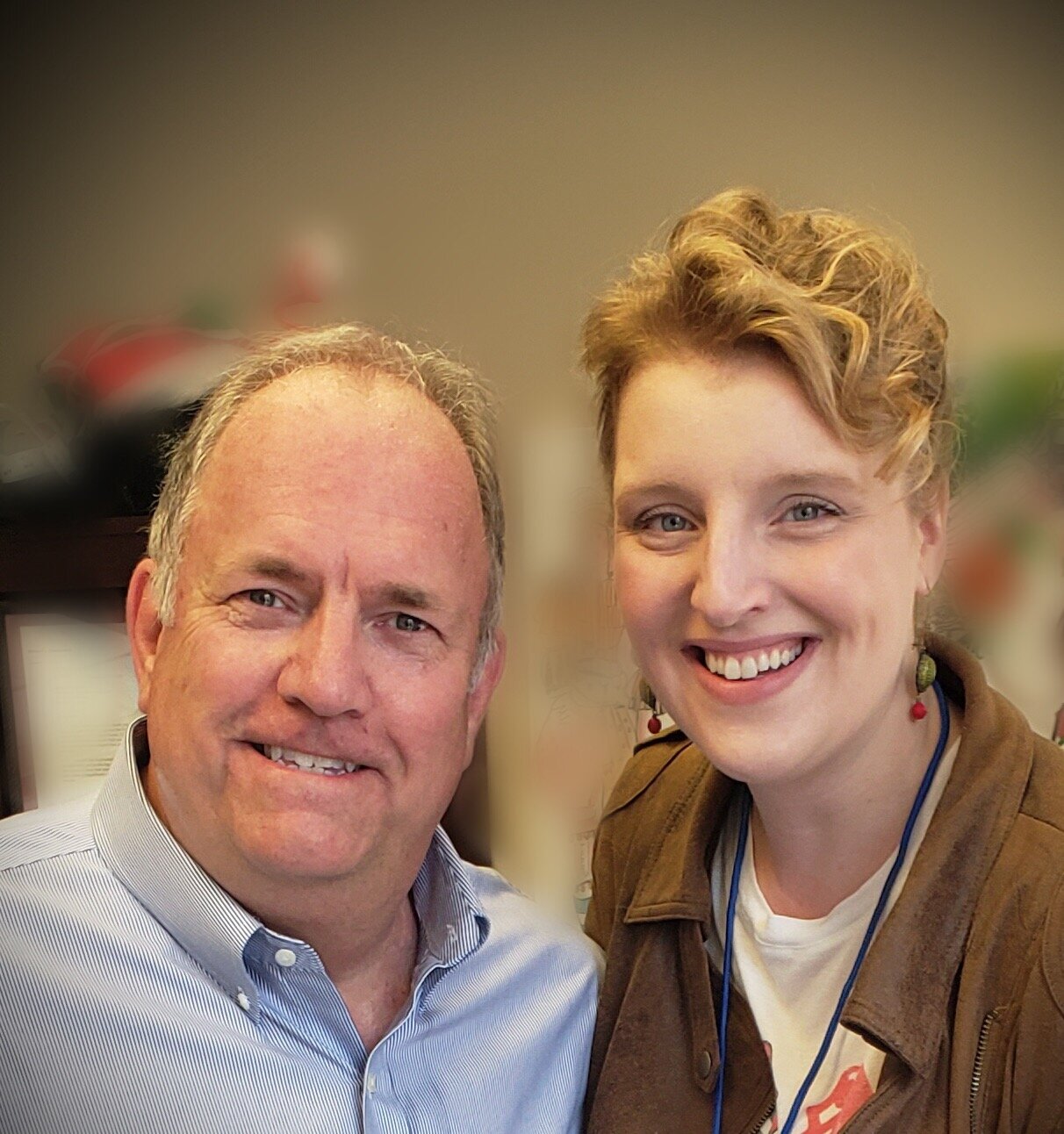BRI SUDIA - Signs Of Things To Come
When Bri Sudia was growing up near Princeton, New Jersey, her parents made sure that she was introduced to a wide spectrum of singers, songs and theater – from the community level to Broadway. Her dad brought home cast albums to feed her passion for emulating the vocal styles and techniques of the performers and trying to figure out exactly how they created their unique sound. “I just remember sponging all of that goodness up,” she told me, “and remembering all the performances that affected me as a kid.”
When Bri was ten, she embarked on a different kind of adventure: learning to communicate with sign language. Those developing skills resulted in a summer camp counselor job and sign interpreting for the theater. So it was no surprise that Bri later earned a degree in sign language interpretation along with a theatre degree from Rowan University.
After receiving an MFA in Acting from the University of Illinois Urbana-Champaign, all roads led to the stage and the next chapter of her life in Chicago. Bri’s work here began in earnest with multiple roles at Chicago Shakespeare Theatre, Steppenwolf, Northlight, a memorable turn in the Rob Lindley directed production of Far From Heaven at Porchlight Music Theatre and then a whirlwind of activity in regional and national productions. Over the past few years in Chicago, her work was recognized with two 2017 Jefferson Award nominations for Goodman’s Wonderful Town and Paramount’s Sweeney Todd, and then wide-ranging roles from TimeLine’s A Shayna Maidel and Drury Lane’s Beauty and the Beast to this spring’s Goodman production of The Music Man directed by Mary Zimmerman.
We talked in early September during rehearsals for the next big project—the highly-anticipated Chicago premiere of the TimeLine Theatre Company production of “OSLO” directed by Nick Bowling that is co-produced with Broadway in Chicago. It didn’t take long to realize that Bri Sudia’s pivotal role as one of two central characters engaged in coordinating the high-stakes negotiations between two bitter enemies was far and away from the quiet lessons all those years ago when she first learned how to use sign language to tell a story. PODCAST
Learning to sign … “Growing up I had two good friends whose grandparents were deaf and lived with them. The mom was an interpreter at the New Jersey School for the deaf and I would go over and hang out with the sons. I was always really interested by the fact that the grandma and the grandpa would sign to each other. I'd always just thought they were sort of magical in my childhood way. I was probably 10 or 11. One day I asked my mom if it would be okay if I brought a sign language book over to their house and if maybe the mom, Harriet, could show me some signs from the book. I didn't know how it would be received. I was nervous about the fact that, I mean, I'm remembering this in my childhood brain. I remember not even being sure if I could communicate to her what I wanted. But she was amazing. And I remember going up to her in the kitchen with the book and sort of pointing and saying, “I want to know this” and she showed me the sign. It started very casually. Every time I would go over, I would pick up a couple more signs and just talk to her. Then I would start leaving my friends in the basement to go find their grandma to have a couple sign language chats. Then I started coming separately from my friends over to their house just to sign with her. And because I was so little, my brain just picked up language like a sponge. It happened so quickly that suddenly I had this very large vocabulary of words. A couple of years after that, the mom of that family asked if I wanted to be a camp counselor at the school for the deaf where she worked. And so one of my first jobs was going to the New Jersey School for the Deaf in the summertime and working with the kids in the camp there over the summer.”
The Chicago interpretive community … “The interpreters in Chicago are really fantastic. At the Goodman recently I went out in the audience afterward to say hello to the interpreter friends that I had there and chatted with some audience members. I honestly hadn't signed. I get to truly, really conversationally sign maybe once or twice a year. It sort of feels like there's clouds of dust coming off my hands. That's the best way I can think of to describe it … my hands feel heavy, my fingers get tired really fast and I just feel their dustiness. … It never really leaves. I'm not up on the invention of every new word. … I remember when we all learned the sign for ‘Internet’ and there was a lot of disagreement about what the sign language sign for ‘Intranet’ would be.”
Championing a cause … “there is definitely a very active theater-going community that is deaf and hard of hearing. And there is a fair amount of outreach in Chicago trying to reach the community and get people into the theaters to see things. The landscape of disability arts is beginning to change. Right now, “All Quiet on the Western Front” at Red Tape Theatre has an actor who uses a motorized wheelchair and it is absolutely fantastic. The expressiveness that he is giving his performance and the way that they have accommodated him to be able to get into the building. They have really made sure that that's something that can happen. And the performance is better because of his presence. It elevates the group and so exciting to see Chicago really beginning to learn how to make that part of something that you see regularly, that those actors are not on the waiting list until there is a show that needs an actor who uses a wheelchair or needs an actor who is deaf. They are now being given opportunities that they should have had all along. It is great to see the community embracing and championing it.”
OSLO … “The play is super exciting. And it's also a particularly exciting time for TimeLine. I had the opportunity to work last year with TimeLine on a play called “A Shayna Maidel,” which was at the TimeLine space in Lakeview. I had such a wonderful experience with the whole TimeLine crew. Their mission and their focus on these plays that highlight certain events in history is such a worthy and beautiful mission. They really execute with such devotion and clear passion for these particular plays and projects. They give them so much love and attention. And with this production, it's really exciting because it is Broadway in Chicago and TimeLine coming together, affording us the opportunity to be at the Broadway Playhouse which for anyone who regularly attends shows at TimeLine knows that that's a 99-seat space. The Broadway Playhouse is upwards of 500 so it really is a change for audiences and for us. There are upwards of 40 people on the production side of this show, which for TimeLine it is usually more like 20. There is a huge group of people behind the show. The show itself is massive. It is a very large cast. 13 people. Only two of them are women, so it is really a male-dominated and driven play. In all of this sort of really intense masculinity is this wonderful character of Mona who acts as the audience's access point to the story … definitely offers the feminine touch and really rounds out the story from her perspective. And so you have this sort of super male energy, heavy political play, but you actually have it being handed to you and you're led through it by this wonderful, strong, willful woman.”
Mona Juul and Terje Rød-Larsen … “The real Mona Juul and Terje are both very much still with us and both working. Mona still works in politics. … at the heart of the story, it is their relationship, their love for each other. I keep saying it's really lovely to do a play about two people in a very healthy relationship, a very healthy marriage. That's really nice cause a lot of the time, when you work on things, the crux of the issue is that there' is something toxic between people. (Mona and Terje) have a really functional and seemingly healthy relationship that allowed them to do this thing. They are very different from each other. Terje is super personable, very charming, charismatic. He knows how to work people a little bit, make them feel comfortable, make them share things about themselves that maybe they wouldn't normally share and then use that information to sort of guide the negotiation towards what he thinks will ultimately help them come together, which he did. And Mona is the one who keeps the train on the tracks. Terje is a little bit of a loose cannon at times. He was not political. She was the political face of the negotiation. She worked for the Norwegian government and Terje had worked for an NGO. He ran an institute called Fafo which was really an aid organization that was not politically motivated. So she was the one with the political tie. She was the one with the political power and the one who keeps everyone in line. And there's a lot of really wonderful research about Mona being the person that the guys wanted to sit next to at dinner. Mona was the one that they wanted. They wanted her attention because she was the woman in the room. But not only that. She was the woman who they admired and who they enjoyed being around. I always love playing real people because I think there is a wonderful wealth of information about them and you learn everything you can and then you have to let it go and do the play as written.” PODCAST
Comments have been edited for length and clarity.
OSLO Photos|Joe Mazza
BEAUTY AND THE BEAST|Brett Beiner
THE MUSIC MAN|Liz Lauren
A SHAYNA MAIDEL|Adam Blaszkiewicz
TIMELINE THEATRE COMPANY
&
BROADWAY IN CHICAGO
present
OSLO
through October 20, 2019
BROADWAY PLAYHOUSE
at Watertower Place
SHOW WEBSITE
BRI SUDIA WEBSITE
PICKSINSIX REVIEW
PODCAST available on Apple Podcasts, Libsyn, Stitcher, IHeartRadio and Radio.com App
ARCHIVE DE USURIS BLOG EMAIL WEBSITE SUBSCRIBE


